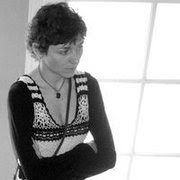 Klaus, Kennell & Klaus, The Doula Book, 2nd edition, 2002
Klaus, Kennell & Klaus, The Doula Book, 2nd edition, 2002My score
5/10
Amazon link
My review
This little paperback provides an overview of the duties, benefits, and experiences of a doula. The first four chapters take the reader on a touchy-feely journey on the good things about having a doula before and during labor. The following four chapters provide summaries of randomized trials regarding doula care. Every trial concludes that having an emotional support person (doula) present continuously throughout labor and delivery significantly reduces the chance of intervention, from epidural to C-section. The most shocking study is from Guatemala, in which the labor and delivery experience was half a dozen women in a single room, attended by one nurse that comes and goes, with no pain relief. It sounded like my mom's birth experience. In Guatemala, half of the women were assigned a doula that stayed with the women throughout labor; their success rates as far as minimal intervention were phenomenally higher. The Dublin Experience is a case study of a maternity hospital in Dublin, Ireland that assigns each mother a nurse midwife during labor; the intervention rates at this hospital are incredibly low and the maternal experience is rated incredibly highly. Moreover, the length of labor is decreased compared to the labor length at the same hospital prior to the introduction of the constant emotional support person. Finally, postpartum care is addressed from the point of view of a postpartum doula, who helps with breastfeeding, care of the newborn and the parents (who, it is pointed out, also need to be mothered during this delicate time), and household chores.
The appendices are arguably the most useful sections of the book as a reference (although the summaries of the trials were interesting as well). Appendix A discusses the training of a doula and how a doula prepares for her work. Additionally, the appendix discusses what happens to the laboring woman during the stages of labor, how a doula can help, and ways she can tell that it's time to seek medical attention. Methods of interacting with a woman that has undergone abuse are discussed. Appendix B lists in detail several self-hypnosis and relaxation meditations.
Many of the findings are summarized here, in Touch and Labor in Infancy.



